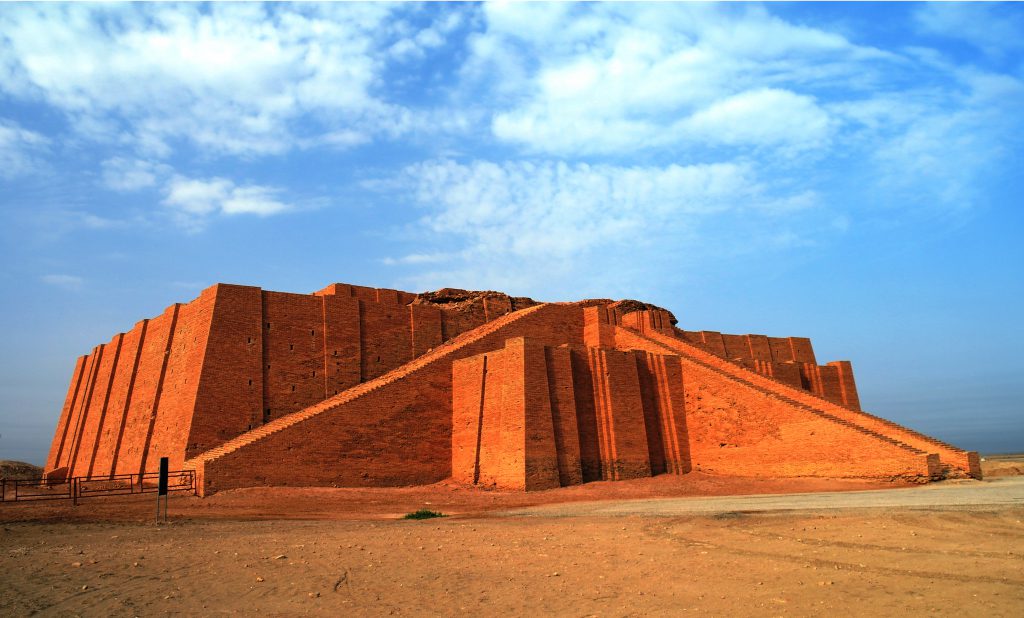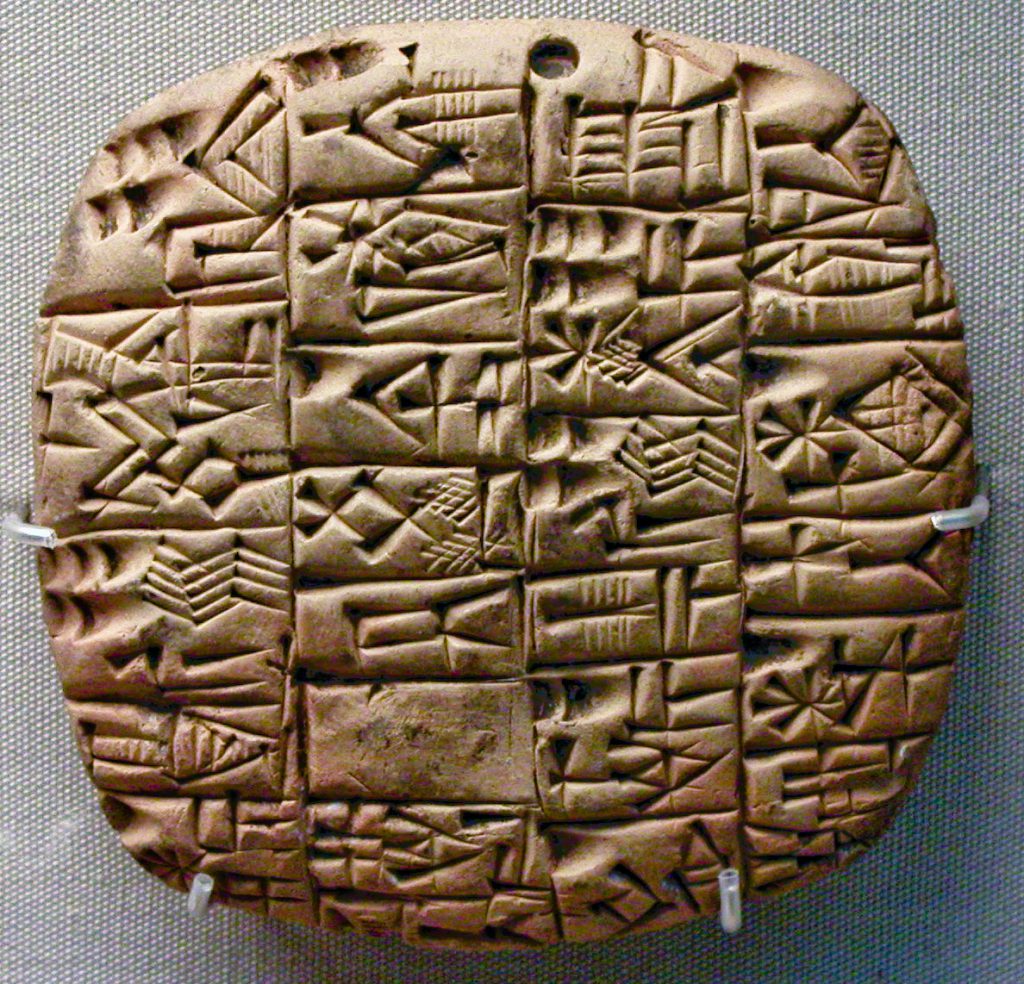Sir Leonard Woolley, Excavations at Ur and Ur of the Chaldees’: A Revised and Updated Edition of Sir Leonard Woolley’s Excavations at Ur, Cornell University Press, 1982 (with PRS Moorey).
Beginning in 1922, Oxford-educated Leonard Woolley led important archeological excavations at Ur sponsored by the British Museum and the University of Pennsylvania that unearthed an unprecedented treasure–trove of ancient Sumerian artifacts and cuneiform tablets. In 1929, he published Excavations at Ur, his first account of what had been discovered. Later he was knighted for his accomplishments. The following description is derived from his work. The history of Sumer begins in the centuries before 3000 BC., some 1500 years prior to the era of Tutankhamen, Akhenaton, and Nefertiti in Egypt and some 2000 years before the exodus from Egypt and time of Kings Saul, David, and Solomon described in the Old Testament. The first blossoming of Sumerian civilization long pre-dates any of these.

The emergence of the full breathtaking sophistication of the civilization of Sumer was rapid. By just subsequent to 3000 BC, Sumerian culture had already taken its classic form. Many of the most accomplished Sumerian works in metal crafting, jewelry, and sculpture date from this early time, as does the development of Sumerian script and literature. According to the Sumerians, it was the god Enki who “taught (humans) the arts of writing and geometry, how to build cities and temples, who filled the Tigris and Euphrates with sparkling water and stocked them with fish.” It was, “the great prince Enki who directed the plow and yoke, opened the holy furrows, and made grain grow in the fields.”
The residences of the gods were believed to be the sky-stretching ziggurat towers and temples at their base. Even in their earliest days, the major Sumerian cities were dominated by the temple upon a raised shrine platform, later to become a multi-leveled ziggurat, of its resident god or goddess. Each city with all its lands and adjoining towns and villages was said to be the property of the god who dwelled in his, or her, great house high above the city.
The human leap toward civilization during the fourth and third millennia B.C. occurred very much in relation to the gods. The large-scale architecture was devoted principally to temple-building. Leaders were greatly concerned with ceremonies of devotion. Art and sculpture were exclusively religious and utilized virtually entirely within the temples. Writing appears to have been developed largely for the administration of the temple economy.
The god’s “house” was a great self-contained unit with fields and tenant farmers, workshops and craftsmen, traders, merchants, servants, slaves, and a hierarchy of scribes, officials, and bureaucrats. At Ur, the complex of ziggurats, temples, and related buildings, which were the home of the god, measured 400 yards by 200 yards. Here shrines were entered through arched doorways of silver and copper, their inner walls of lapis lazuli and gold. As described in the Book of Solomon, this kind of overwhelming splendor was reflected as well two thousand years later in the Temple of Solomon in Jerusalem.
At Ur, housing for priests and priestesses, offices, workshops, and stores covered many acres. Temple workshops produced works by all known craftsmen including sculptors, jewelers, lapidaries, carpenters, metal smiths, leatherworkers, basket-makers, and spinners and weavers of textiles. Temples were also centers of education for the training of scribes. The god was, in addition, a landowner on a vast scale and stewards managed his or her estates. In the temple kitchens at the base of each ziggurat, meals were prepared for the gods and presented to them in their shrines atop the ziggurat or in their temple below. One cuneiform tablet instructed that:
“And the priest shall make libations to the god,
In the first watch of the night
The door shall not be shut
And the meals shall be offered to all the deities
Dwelling in the court.
And in the first watch of the night,
On the roof of the topmost stage of the temple,
Prayer shall be recited.
A golden tray shall be prepared for the deities of heaven,
Water shall be poured for their hands,
And then a tray, serving bull meat, ram meat and fowl shall be set down.”
Among the other offerings were wild boar, ducks, cranes, other wild birds, and ostrich eggs along with a large number of loaves. Served to the gods as well, usually in vessels of gold, were sweet beverages made from milk, honey, and dates, together with generous libations of beer and wine. Throughout the day and at intervals during the night the music of flutes, harps, and lyres and the chanting of hymns, prayers, and incantations resonated through the temple precinct, with each temple including a corps of singers and musicians. On ceremonial occasions curving trumpets of bull’s horn or bronze were played together with vast kettle drums five feet across, similar to the music still heard on special occasions in Tibetan Buddhist temples.
The side terraces of the upper stages of a ziggurat were probably covered with soil in which gardens and trees were planted. The ziggurat structure was cloaked with greenery and hanging gardens, bringing to mind the later Biblical “hanging gardens of Babylon” in the same location and perhaps making use of an earlier Sumerian ziggurat. The ziggurat was called the “Mountain of the Gods”. On its topmost stage, the one-roomed Temple of the God was the most sacred building in Ur. This high temple atop the ziggurat may have been merely a stopping and resting place for the deity on his or her journey from heaven to their primary residence in the larger temple at the ziggurat’s base.
Herodotus would later write that in Babylon the shrine at the top of the ziggurat still standing there was, “equipped with a fine couch in it, richly covered and beside it a golden table.” Woolley recorded that, “The Babylonians say that the god enters the temple in person and takes his rest upon the couch.” Within the temple complex was also the “Harem of the God”, comprised of a group of women who were part of the god’s household. Chief among these priestesses were the “bride of the deity”, the rest his concubines and domestics.
Next: Inanna: Queen of Heaven and Earth: Her Stories and Hymns from Sumer
